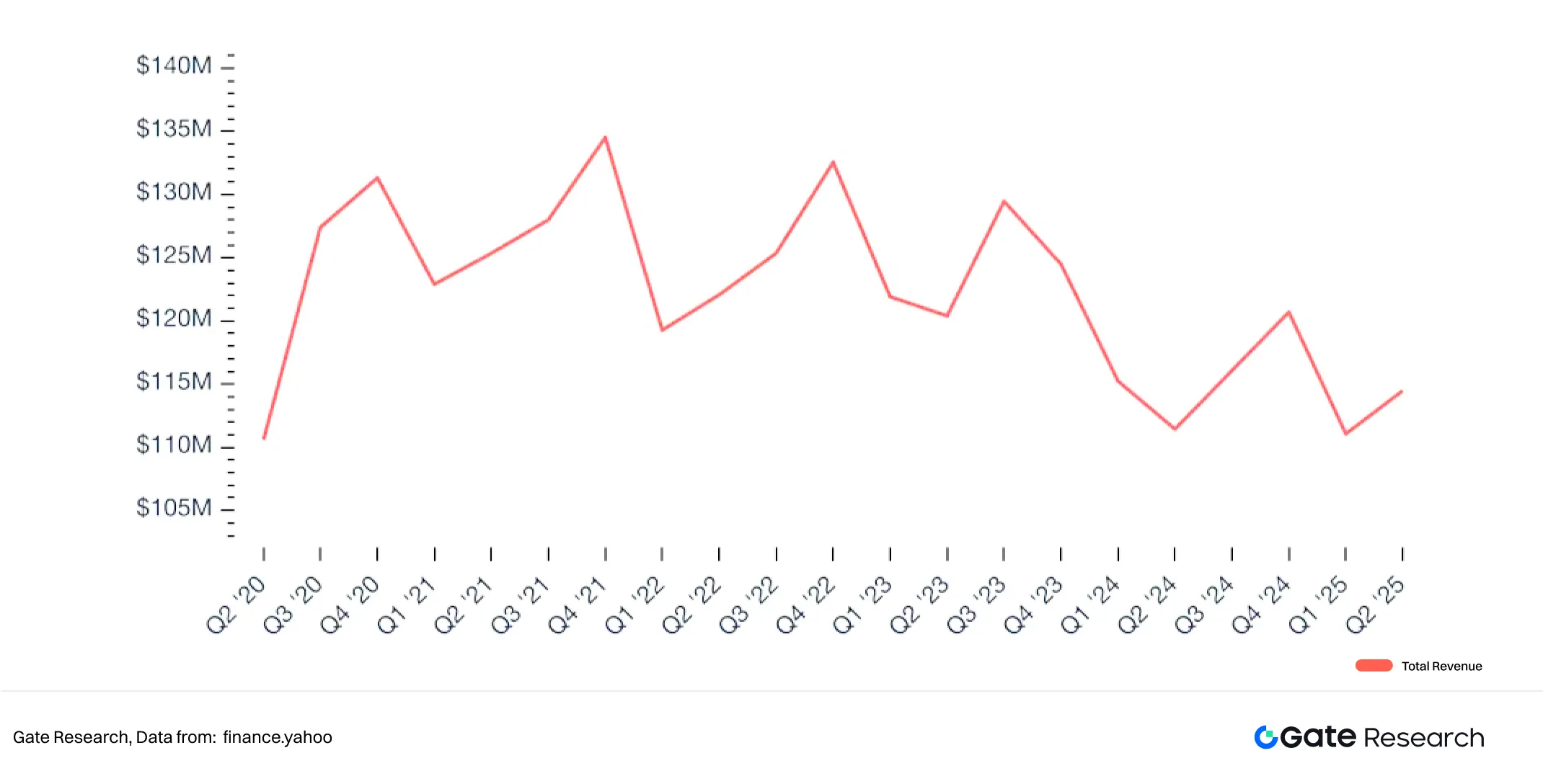Written by: seedly.eth
"On-chain US Stocks" is not a new concept, but in the context of the recent consolidation in the crypto market and the lack of clear direction for mainstream coins, this sector remains a hotbed for trading.
Over the past year, many projects in the market have attempted to bring US stock indices and government bond yields, even individual stocks, on-chain. However, most of these products have remained at the "shadow asset" stage: either their price sources overly rely on oracles, or they lack sufficient trading depth, or there are still significant price discrepancies with traditional markets, making it difficult to be regarded as a truly "substitutable market."
The HIP-3 upgrade of Hyperliquid seems to be a turning point, as this upgrade technically allows for the permissionless creation of a native on-chain order book perpetual market. This, to some extent, ends the situation where traditional asset trading on-chain mainly relies on synthetic assets or oracle-driven models, providing another possibility for building an independent market with self-price discovery capabilities on-chain.
Taking TradeXYZ's XYZ100 as an example: since its launch, its trading volume has continued to rise, with daily transaction amounts stabilizing at tens of millions of dollars, and the open interest cap has increased from the initial $25 million to $60 million.

Background
TradeXYZ is a native protocol incubated in the Hyperliquid ecosystem, focusing on bringing real-world assets (RWA) — such as US stocks, indices, etc. — into on-chain trading scenarios through tokenization. The protocol supports both spot and perpetual contract trading modes and integrates with Unit Protocol to handle the liquidity and settlement of spot assets. Users can deposit, withdraw, and trade using USDC, with its core product being equity-based perpetual contracts built on the HIP-3 standard, aiming to bridge traditional financial markets with decentralized trading experiences.
XYZ100 is a fully on-chain CLOB (Central Limit Order Book) model, supporting up to 20x leverage and 24/7 trading. Prices are anchored by the Nasdaq futures oracle from CME (Chicago Mercantile Exchange), and during non-trading hours, an 8-hour EMA (Exponential Moving Average) is used to smooth prices, avoiding sharp fluctuations.
HIP-3 was officially launched around October 13, 2025, and TradeXYZ almost simultaneously launched XYZ100, initially limited to the first 100 whitelisted users (who need to have a cumulative trading volume of over $5 million on Hyperliquid) for alpha access.
In just two days, the trading volume of XYZ100 surpassed $63 million, with open interest reaching $15 million, far exceeding other RWA perpetual contract DEXs.
Why are crypto traders turning to US stocks?
Firstly, the "high volatility and low certainty" of crypto is being overshadowed by the "steady growth" of US stocks: while BTC shows signs of institutional accumulation, the "leverage crash" on October 11 has left retail investors wary.
Currently, the US stock market is booming, with the S&P 500, Dow Jones, and Nasdaq indices hitting historical highs for three consecutive trading days this week. Meanwhile, on-chain trading platforms are attracting global investors with their unique advantages: through 24/7 uninterrupted trading, no KYC verification, and up to 20x leverage, users from different time zones in Asia, Europe, etc., can adjust their positions at any time, completely breaking free from the traditional T+1 settlement mechanism and weekend market closures.
However, traditional Nasdaq E-mini futures still have a daily trading volume of several hundred billion dollars at CME, while the scale of on-chain assets remains a "number after the decimal point" in comparison.
Competition in the on-chain US stock sector
With the rise of this trend, the entire on-chain US stock ecosystem is rapidly evolving, with multiple protocols entering the market from different angles:
On Solana and BNB Chain, xStocks offers spot trading for over 80 US stocks/ETFs through its alliance ecosystem, allowing users to directly collateralize loans with tokens of Apple or Tesla. The protocol's cumulative trading volume has exceeded $2 billion, accounting for 58.4% of the tokenized stock trading volume in the 2025 era, with over 30,000 daily active users gradually capturing retail market share from Robinhood.
Derive.xyz focuses on multi-chain options and perpetual contracts, covering Bitcoin, Ethereum, and some RWA indices, attracting advanced players with its institutional-grade tools and real-time oracles. Although the fees are high and the learning curve steep, the total trading volume has reached $18.6 billion, with the RWA perpetual sub-market maintaining a monthly trading volume of $500 million.
Kraken xStocks has gained preliminary approval from the SEC due to the backing of the exchange and is migrating to layer two networks like Arbitrum to enhance composability. Its cumulative trading volume has surpassed $5 billion, with over 37,000 unique holders covering more than 60 assets, although the non-fully on-chain custody model still poses centralization risks.
Vest Markets takes a different approach, focusing on reducing slippage issues during weekend trading through an RFQ filling mechanism, achieving a 24-hour trading volume of $34.05 million. While its blockchain audit and LP incentive model are innovative, the current market depth still appears insufficient.
Based on Arbitrum, Ostium provides a fully on-chain experience for synthetic RWA perpetual contracts, having expanded from US stocks to commodities like crude oil and gold. The protocol's TVL growth rate exceeds 150%, with Q1 perpetual contract trading volume at $2.36 billion, providing an important option for zero KYC entry users.
Risks and Challenges
Of course, none of this is without controversy.
Kaledora, co-founder of Ostium Labs, points out that the model of rebuilding market depth with on-chain order books is more suitable for crypto-native assets rather than traditional financial assets, as the latter has a more stable, centralized, and deeper liquidity structure. In Kaledora's view, a better solution is the "on-chain brokerage model": directly referencing the price depth of the TradFi market and accessing it through on-chain channels, rather than attempting to rebuild an order book that competes with CME on-chain.
Additionally, there are risks related to oracles and manipulation. During non-trading hours, on-chain prices rely on algorithms to smooth trends, but this is not foolproof. Previously, the PAXG gold contract experienced abnormal price fluctuations that led to millions of dollars in positions being liquidated, ringing alarm bells for all RWA products — when the market is closed but trading continues on-chain, the risk of price deviation indeed exists.
Regulatory uncertainty is also a concern. The SEC is reviewing the compliance of these on-chain US stock products, and if they are ultimately classified as securities, existing DeFi protocols may need to apply for corresponding licenses. While many projects are already exploring compliance pathways, most still operate in a regulatory gray area.
Conclusion
The crypto world once entertained itself within its own circle: new chains, new coins, new stories, new narratives. But the true financial power comes from who can carry the markets that global capital truly wants to participate in.
And Nasdaq is always there, with trillions of dollars flowing, where the world's most valuable companies trade.
Therefore, true players in the crypto space never care where the battlefield is; they only care where the opportunities lie.
免责声明:本文章仅代表作者个人观点,不代表本平台的立场和观点。本文章仅供信息分享,不构成对任何人的任何投资建议。用户与作者之间的任何争议,与本平台无关。如网页中刊载的文章或图片涉及侵权,请提供相关的权利证明和身份证明发送邮件到support@aicoin.com,本平台相关工作人员将会进行核查。





